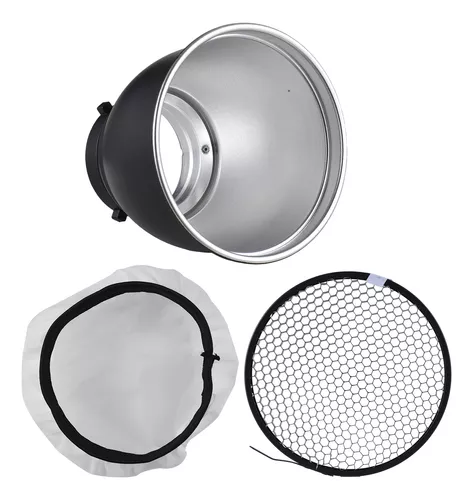When it comes to cleaning dishes, many households rely on traditional sponges, scrubbers, or dishcloths, but these tools often fall short in terms of durability, effectiveness, and sustainability. That’s where the dishsock comes in—a practical, eco-friendly alternative designed to revolutionize the way we clean dishes. In this comprehensive guide, we’ll explore everything you need to know about the it, from its benefits and uses to maintenance and sustainability, and why it’s the ideal addition to any kitchen.
What is a Dishsock?
A dishsock is a reusable, eco-friendly cleaning cloth designed specifically for washing dishes and other kitchen surfaces. Made from durable, high-quality materials like cotton or bamboo fibers, it provide a more effective cleaning experience compared to traditional dishwashing tools. Unlike sponges that can break down quickly and harbor bacteria, It are designed to last longer, clean more effectively, and are easy to sanitize. Their versatility also extends beyond washing dishes, as they can be used on countertops, stovetops, and even glassware without scratching or leaving streaks.
it are often handcrafted, with some brands offering custom designs or color options. They come in different sizes, shapes, and levels of thickness, allowing you to choose a it that best fits your cleaning needs. Their unique design combines durability with flexibility, enabling them to reach tight corners of pots, pans, and cups, ensuring thorough cleaning each time.
Why Choose a Dishsock?
The popularity of dishsocks is rising as more people seek sustainable, zero-waste alternatives for everyday household tasks. Here are some reasons why a dishsock might be the perfect choice for your kitchen:
1. Eco-Friendly and Sustainable
This are typically made from renewable resources like cotton or bamboo fibers, making them a more sustainable choice than synthetic sponges, which can contribute to microplastic pollution. By opting for a it, you reduce your carbon footprint and cut down on single-use products, ultimately helping the environment. Plus, it are often biodegradable or compostable, meaning they won’t contribute to landfill waste when they reach the end of their life.
2. Cost-Effective and Long-Lasting
Though they may have a higher upfront cost than standard sponges, it are built to last. With proper care, a single dishsock can last several months or even years, depending on the frequency of use. This longevity makes them a cost-effective option in the long run, saving you money and reducing the need for frequent replacements.
3. More Hygienic
Sponges are notorious for trapping food particles, oils, and bacteria, creating an ideal breeding ground for germs. Dishsocks, on the other hand, are designed to be easily cleaned and dried, preventing bacterial buildup. Many it are machine washable, so you can throw them in with your laundry to keep them fresh and germ-free.
4. Versatile and Effective Cleaning
it are crafted to be gentle on surfaces but tough on grime. Their fibers are excellent for scrubbing away food residue without scratching delicate items, such as non-stick pans or glassware. Additionally, dishsocks are versatile enough to be used on countertops, tiles, and appliances, making them a multi-purpose cleaning tool for the entire kitchen.
How to Use a Dishsock
Using a it is simple and similar to using any other dishwashing cloth or sponge. Here’s a quick step-by-step guide:
- Wet the Dishsock: Start by wetting the dishsock with warm water. For a deeper clean, you can add a few drops of dish soap to the cloth.
- Scrub Your Dishes: Use the it to scrub away food particles and grease from your dishes. Thanks to its soft but durable fibers, it’s safe to use on a wide variety of materials, including ceramic, stainless steel, glass, and even cast iron.
- Rinse and Wring Out: Once you’re done scrubbing, rinse the dishsock under warm water to remove any soap or debris. Then, wring it out to remove excess moisture. Unlike sponges, it dry relatively quickly, preventing the buildup of odors.
- Air Dry Between Uses: Allow the dishsock to air dry between uses, preferably in a location where it can hang and dry completely.
Maintaining Your Dishsock for Long-Term Use
To ensure your dishsock stays effective and lasts as long as possible, regular cleaning and maintenance are key. Here’s how you can keep it in optimal condition:
1. Machine Washing
Most it can be cleaned in a washing machine, making maintenance easy. It’s recommended to wash them with your regular laundry at least once a week to remove any trapped food particles and bacteria. Use a gentle detergent and avoid fabric softeners, as they can reduce the absorbency of the it.
2. Hand Washing
If you prefer to hand wash, use hot water and a mild soap to rinse out any residue. Scrub the dishsock by hand, rinse thoroughly, and wring it out to remove excess moisture. Hang it in a well-ventilated area to dry.
3. Boiling for Deep Cleaning
For a more thorough sanitization, consider boiling the it. Simply place it in boiling water for a few minutes to kill any bacteria and remove stubborn stains or smells. Be sure to allow it to cool and air dry before using it again.
4. Avoiding Harsh Chemicals
This are generally made from natural fibers, so it’s best to avoid bleach or other harsh chemicals that could damage the fabric. Stick to mild, eco-friendly detergents to prolong its lifespan and maintain its cleaning efficiency.
Dishsock Alternatives and Comparisons
If you’re considering switching to a more eco-friendly dishwashing solution, you might be curious about how the dishsock compares to other popular alternatives:
Dishcloths
While dishcloths are similar in function, they’re generally thinner and may not offer the same scrubbing power as a it. However, both are reusable and can be washed, making them more eco-friendly than single-use options.
Sponges
Standard sponges, particularly those made from synthetic materials, break down quickly, often within a few weeks of use. This breakdown releases microplastics into the water, making sponges less sustainable than dishsocks. Additionally, sponges are more likely to harbor bacteria, as they do not dry as quickly or easily as it.
Silicone Scrubbers
Silicone scrubbers are popular for their durability and resistance to bacterial growth. However, they may not offer the same absorbency as dishsocks, which makes silicone scrubbers less effective for wiping surfaces. Many people find that it provide a more balanced option, combining scrubbing power with the ability to absorb spills.
Finding the Right Dishsock for Your Needs
When shopping for a It, consider factors such as material, thickness, and size. Here are some tips to help you find the right one:
- Material: Choose natural fibers like cotton, hemp, or bamboo for an eco-friendly choice. Bamboo is especially known for its antibacterial properties, which can add an extra layer of hygiene.
- Thickness: If you need a heavy-duty scrubber, opt for a thicker with a more textured surface. For light cleaning tasks, a thinner option may be sufficient.
- Size and Shape: This come in various sizes and shapes, so pick one that feels comfortable in your hand and fits the contours of your dishes and cookware.
Conclusion: Why a Dishsock is the Perfect Kitchen Companion
The is more than just a cleaning tool—it’s an eco-friendly, cost-effective, and practical solution for every kitchen. Its durability, versatility, and ease of maintenance make it an excellent replacement for traditional sponges and cloths, while its eco-conscious design helps reduce waste and supports sustainable living. Whether you’re looking to upgrade your dishwashing routine or reduce your environmental footprint, the is a worthwhile investment for a cleaner kitchen and a cleaner planet.
From its effective scrubbing power to its sustainability, the dishsock stands out as a modern kitchen essential. So why not make the switch and see the difference a it can bring to your cleaning routine? It’s an easy, impactful change that supports both your household and the environment.


